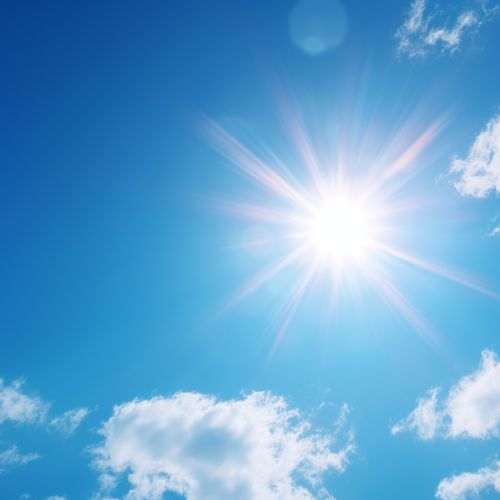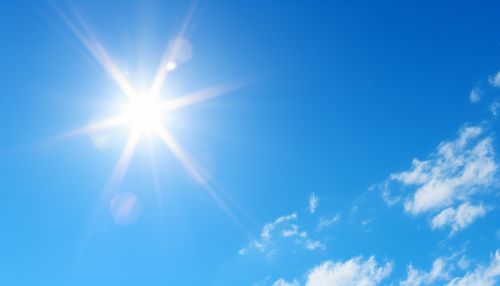UVA radiation
Introduction
Ultraviolet A (UVA) radiation is a type of ultraviolet (UV) radiation that is categorized as long-wave light. The wavelengths of UVA radiation range from 315 to 400 nanometers (nm). UVA radiation is less intense than UVB radiation, but it is more prevalent and penetrates deeper into the skin.


Characteristics of UVA Radiation
UVA radiation is present in sunlight and accounts for about 95% of the UV radiation that reaches the Earth's surface. Unlike UVB radiation, which varies in intensity depending on the time of day and year, the intensity of UVA radiation remains relatively constant throughout the day and year. UVA radiation can penetrate through clouds and glass, making it a significant factor to consider in both indoor and outdoor environments.
Effects on the Skin
UVA radiation penetrates deeper into the skin compared to UVB radiation, reaching the dermis, the skin's thickest layer. This deep penetration can lead to damage to collagen and elastin, proteins that maintain the structure and elasticity of the skin. The result is premature skin aging, characterized by wrinkles, fine lines, and age spots.
Health Implications
While UVA radiation is less likely than UVB radiation to cause sunburn, it contributes significantly to skin tanning. However, it is important to note that tanning is a sign of skin damage, as it is the skin's response to DNA damage from UV radiation. Prolonged exposure to UVA radiation can lead to various skin disorders, including actinic keratosis, melanoma, and other types of skin cancer.
Protection Against UVA Radiation
Protection against UVA radiation involves a combination of measures, including limiting sun exposure during peak hours, wearing protective clothing and sunglasses, and using broad-spectrum sunscreen that protects against both UVA and UVB radiation.
UVA Radiation in Tanning Beds
Tanning beds typically emit a high proportion of UVA radiation, which can lead to the same skin and health effects as natural sunlight. The World Health Organization has classified tanning beds as carcinogenic to humans, highlighting the risks associated with their use.
Conclusion
Understanding the characteristics and effects of UVA radiation is crucial for effective sun protection and skin health. While UVA radiation contributes to the natural tanning process, it also plays a significant role in skin aging and the development of skin cancer. Therefore, it is essential to take appropriate protective measures when exposed to sunlight or using tanning beds.
